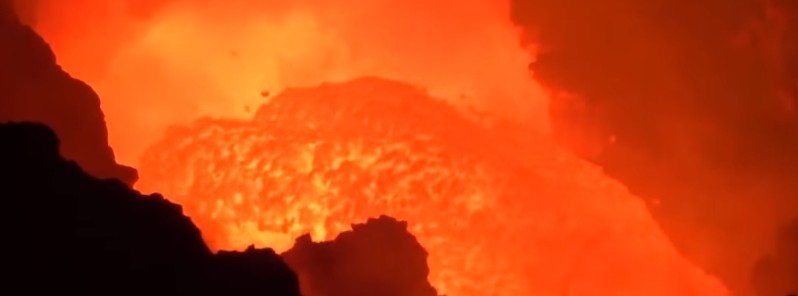Lava lake activity in Masaya’s Santiago crater increasing, Nicaragua

The activity of the lava lakes in Masaya's Santiago crater is increasing. According to INETER, volcanic tremor remained high and Real-time Seismic Amplitude Measurement (RSAM) values were at high to very high levels during February 20 – March 1, 2016.
On February 23, small explosions ejected spatter onto the crater floor. Volcanologists observed active lava lakes in all three vents on the crater floor, and noted that the inner walls of the crater were being eroded due to the lava lake and a new vent was forming on the SE part of the crater floor.
During their second visit, on February 24, INETER staff noted that the vents had become larger due to landslides on the crater walls. Small streams of lava sporadically originated from the NE vent.
The two vents in the SW part of the crater had almost merged on March 1. On the same day, José María Salmerón captured crater's activity on video:

Video credit José María Salmerón (via Volcano Discovery)
Geologic summary
Masaya is one of Nicaragua's most unusual and most active volcanoes. It lies within the massive Pleistocene Las Sierras pyroclastic shield volcano and is a broad, 6 x 11 km basaltic caldera with steep-sided walls up to 300 m high. The caldera is filled on its NW end by more than a dozen vents that erupted along a circular, 4-km-diameter fracture system. The twin volcanoes of Nindirí and Masaya, the source of historical eruptions, were constructed at the southern end of the fracture system and contain multiple summit craters, including the currently active Santiago crater. A major basaltic plinian tephra erupted from Masaya about 6500 years ago.
Historical lava flows cover much of the caldera floor and have confined a lake to the far eastern end of the caldera. A lava flow from the 1670 eruption overtopped the north caldera rim. Masaya has been frequently active since the time of the Spanish Conquistadors, when an active lava lake prompted attempts to extract the volcano's molten "gold." Periods of long-term vigorous gas emission at roughly quarter-century intervals cause health hazards and crop damage.
Featured image credit: José María Salmerón

Commenting rules and guidelines
We value the thoughts and opinions of our readers and welcome healthy discussions on our website. In order to maintain a respectful and positive community, we ask that all commenters follow these rules.